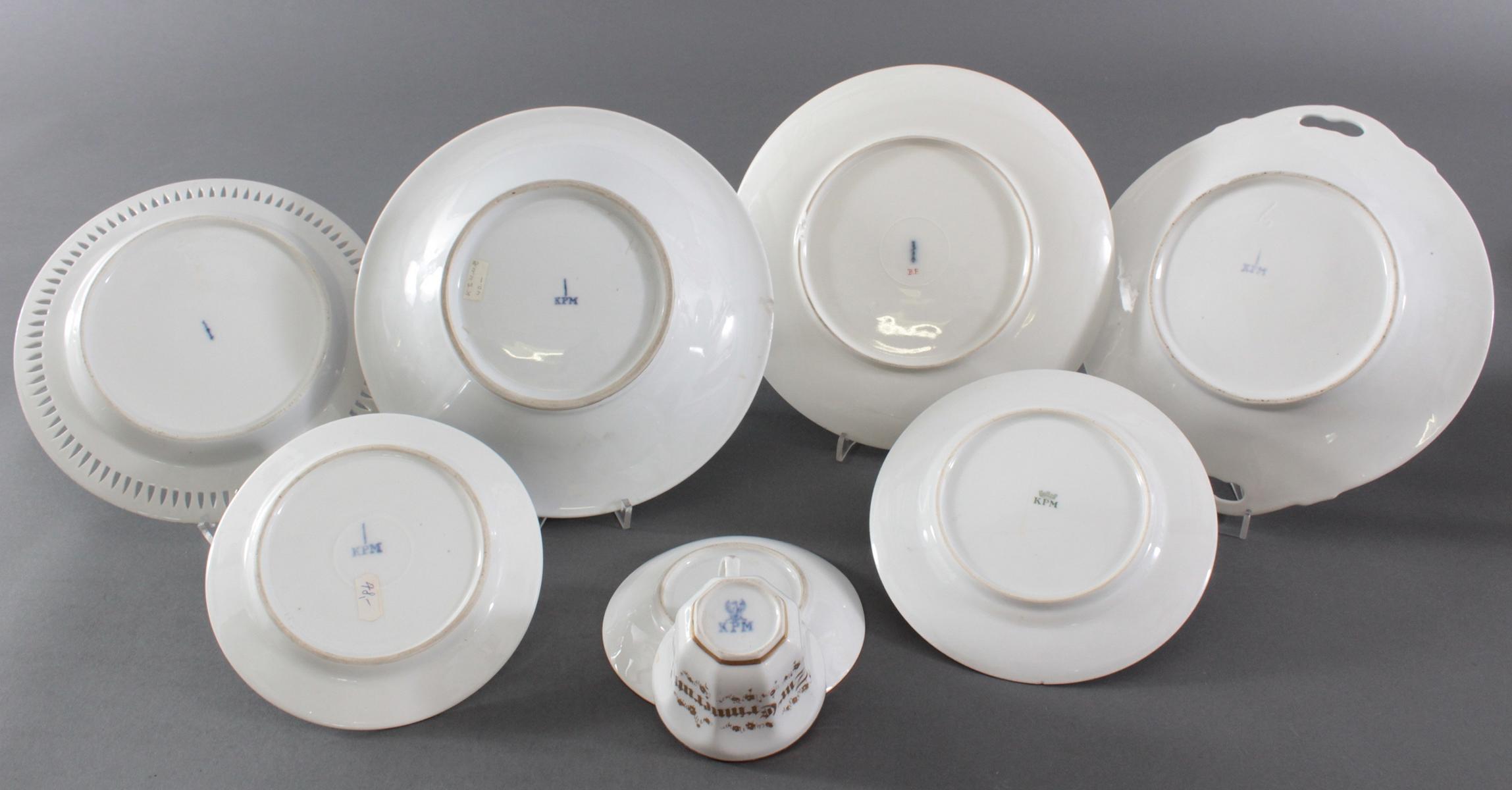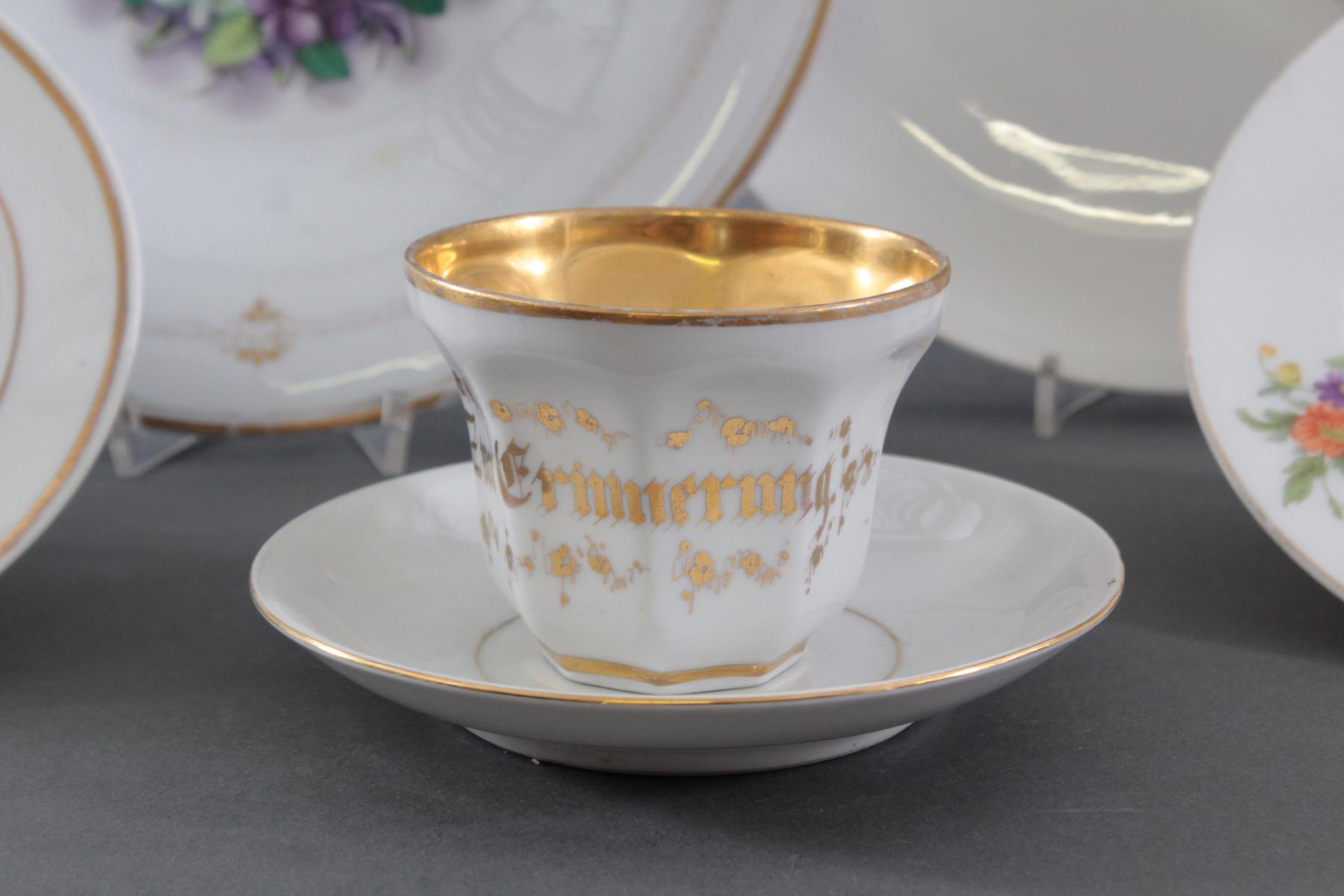
Tafelservice, KPM Berlin, um 1900 Porzellan, Lot 4055 Porcelain painting, China painting
Scepter mark Staatliche Porzellan Manufaktur 1993 - 1999 mark Green decoration mark Green KPM decoration mark used in the 1913 - 1992 period KPM red mark KPM 1832 - 1892 red decoration mark Dot scepter mark KPM Berlin 1981 mark with a dot above the scepter KPM Berlin mark KPM Berlin 1945 - 1962 mark on items produced in Berlin KPM impressed mark

KPM, Punsch Terrine, um 1900 Porzellan, Punsch
KPM, or Königliche Porzellan Manufaktur ('Royal Porcelain Factory' in English), is Berlin's oldest porcelain factory and Germany's second oldest. It was founded in 1763 and continues to produce porcelain to this day.

Konvolut KPM Porzellan um 1900 Badisches Auktionshaus
Kpm Porzellan Um 1900 Suche speichern Schwarze Plakette Antik Porzellan Tänzerin Porzellan Porzellan Figur Höchster Neo Rokoko Albert Kette Silber Meissen Tänzerin Antikes Porzellan Mehr beliebte Suchanfragen 12 KPM Berlin Deutsche handbemalte Bouillon-Schalen und Unterteller aus Porzellan, um 190

KPM Berlin Porzellan Figur um 1900 Kaufen auf Ricardo
The Königliche Porzellan-Manufaktur, (Royal Porcelain Factory) or KPM, was founded in 1763 by King Frederick II of Prussia. The factory was established in the Berlin suburb of Charlottenburg with the goal of creating high-quality porcelain to rival the products of other European manufacturers, particularly those from France.

Teller, KPM Berlin, um 1900, Bumendekor, kobaltblau und Gold , ø 17cm Kpm porzellan, Keramik
Die Königliche Porzellan-Manufaktur Berlin ( KPM) ist eine seit 1763 in Berlin bestehende und produzierende Manufaktur von feinen Porzellanerzeugnissen. Sie wurde von Friedrich dem Großen gegründet und hat ihren Sitz in der heutigen Wegelystraße. Inhaltsverzeichnis 1 Firmengeschichte 1.1 Anfänge 1.2 Gründung 1.3 Rokoko 1.4 Klassizismus

KPM Berlin Kaffeetasse mit Unterteller, purpur Blumen und Goldstaffage, um 1900 Vintage
Exterior of the KPM building in 2009. The Royal Porcelain Factory in Berlin (German: Königliche Porzellan-Manufaktur, abbreviated as KPM), also known as the Royal Porcelain Manufactory Berlin and whose products are generally called Berlin porcelain, was founded in 1763 by King Frederick II of Prussia (known as Frederick the Great). Its actual origins, however, lie in three private enterprises.

KPM Berlin Teller mit bunter Blumenmalerei, um 1900, D= 24,5cm 3 Blumenmalerei, Porzellan
The Stiftung Preußische Schlösser und Gärten Berlin-Brandenburg (SPSG) is responsible for the conservation and scholarly research of the historic collections of the Königliche Porzellan-Manufaktur Berlin (KPM). In 1981, the archives of the manufactory and its special collections became the property of the federal state of Berlin.

KPM Berlin Teller mit bunter Blumenmalerei, um 1900, D= 24,5cm 1 in Antiquitäten & Kunst
KPM Berlin - the Royal Porcelain Manufactory Berlin - has been producing unique porcelain for over 250 years. Founded in 1763 by Frederick the Great, the manufactory still stands today for handmade luxury, stylish design and the highest quality standards. In the tradition of the best craftsmanship, exclusive porcelain has been created over the.

Konvolut KPM Porzellan um 1900 Badisches Auktionshaus
Tafelservice, KPM Berlin, um 1900Porzellan, "Neuglatt", Blumendekor in pastellfarbener Weichmalerei, Goldstaffierung.. on Mar 29, 2014

6 Mokkagedecke (Nr.1) KPM Berlin um 1900 mit Blumenmalerei und Goldzierkante Porzellan & Porcelain
KPM porcelain pair of peas Antique porcelain origin Germany Circa 1900 perfect condition Floral. Category Antique Early 1900s German Neoclassical Porcelain. Materials. Porcelain. View Full Details. KPM Porcelain Pair of Peas.. A kpm porzellan is a generally popular piece of furniture, but those created in mid-century modern,.

KPM Porzellan Teller um 1900 Italienische Landschaft Ruine einwandfreier Zustand Porzellan
kpm stores; KPM AVIATOR CUP URBINO Corso LAB ENSO Novelties EDITION NOUVELLE ROUGE Atelier Edition 2022 MANDORLA Collection; Porcelain To-go cups Sets Vases Bowls Plates Cups Mugs Pots Serving dishes Figurines Limited Editions KPM Individual Interior Table Accessoires; Collections KURLAND KURLAND BLANC NOUVEAU LAB ARKADIA BERLIN URBINO URANIA.

Konvolut KPM Porzellan um 1900 Badisches Auktionshaus
The Art Nouveau period at KPM brought quite a few new styles of painting and figurines that are just incredible. Professor Schmuz-Baudiss took over during this period. He was the reason Paul Scheurich came to Berlin who made some of the more famous figurines of this period. Also Trude Petri and the Bauhaus style is worth mentioning.

Kl. Vase mit Bronzemontierung, KPM Berlin um 1900. Porzellan, Bronze vergoldet. Bauchige Wandung
KPM is an acronym for Königliche Porzellan-Manufaktur Berlin, which translates to "Royal Porcelain Factory in Berlin." The company was founded in 1763 by Frederick II of Prussia, who bought the factory from its previous owner, Johann Ernst Gotzkowsky, in the wake of its bankruptcy.

(G824) KPM Berlin Teller um 1900, Blumenmalerei, Goldrand, 1.Wahl, D=24,5cm Antiquitäten
An Incomplete History of Early Piru. Hugh Warring, who moved to Piru in 1869. According to an interview in 1930, the Warrings became the owners of the Buckhorn Ranch. Photos courtesy Fillmore Historical Museum. By Anonymous — Wednesday, August 5th, 2020. David Cook of Chicago. Before the town of Piru was developed, ranchers of the community.

Traumhafte Teller, KPM Berlin Weichmalerei um 1900 Sabet Antiquitäten Berlin
Antique 19thC KPM Berlin Porcelain Strawflower Plate Set of 6 Porzellan Teller. Porcelainbiz. (4441) 100% positive. Seller's other items. Contact seller. US $799.00. or Best Offer. No Interest if paid in full in 6 mo on $99+ with PayPal Credit*.

KPM Berlin Teller, Reliefzierat mit Spalier, Blumenmalerei, um 1900, D= 25 cm Blumenmalerei
The letters KPM can trace their ancestry back to 1763 when they were first used by the Konigliche Porzellan Manufacktur (Royal Porcelain Manufactory) in Meissen. By 1825, the same letters were beginning to be used by the Royal Porcelain Manufactory in Berlin. There have been fakes and look-alike marks almost since the start of original production.